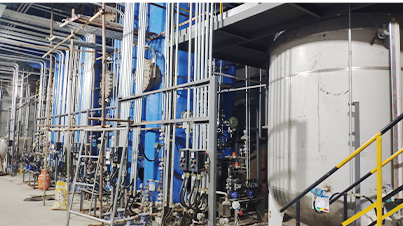coagulant and flocculant chemicals
Coagulant and Flocculant Chemicals Essential Agents in Water Treatment
Water treatment is a critical component of environmental management, ensuring that our water supply remains clean and safe for consumption and various uses. Among the myriad of processes involved in this complex system, the use of coagulant and flocculant chemicals stands out as an effective and efficient means for removing impurities from water. This article will explore the importance, mechanisms, and applications of coagulant and flocculant chemicals in water treatment.
Understanding Coagulants and Flocculants
Coagulants are chemical agents that promote the aggregation of particles in a liquid, making them larger and heavier. This process is known as coagulation. When added to water, coagulants neutralize the negative charges on fine suspended particles (such as silt, clay, and organic matter) that prevent them from clumping together. As a result, these particles tend to form larger aggregates or flocs, effectively removing impurities from the water.
Flocculants, on the other hand, are chemicals that assist in the further aggregation of these larger particles into even bigger flocs. The primary function of flocculants is to enhance the settling process, allowing the formed flocs to settle down more rapidly and effectively during sedimentation. Both coagulants and flocculants play pivotal roles in clarifying water, thus improving its quality.
Types of Coagulants and Flocculants
Different types of coagulants are available, each with specific properties suitable for various applications. The most commonly used coagulants include aluminum sulfate (alum), ferric sulfate, and polyaluminum chloride (PAC). Alum is favored for its efficiency and cost-effectiveness, while ferric sulfate is often used in situations where a lower pH is desirable.
Flocculants are generally categorized into two main types inorganic and organic. Inorganic flocculants, such as ferric chloride, provide significant settling efficiency. Organic flocculants, particularly high molecular weight polymers, are highly effective in enhancing settling and can perform well across varied pH levels. These organic polymers are more commonly used in industrial applications, such as wastewater treatment.
coagulant and flocculant chemicals

Mechanism of Action
The action of coagulants begins when they are added to water containing suspended particles. The neutralization of charges occurs, causing particles to collide and stick together. Once these microscale floccules are formed, flocculants are introduced to promote further particle aggregation. The resulting larger flocs can be effectively removed from the water through processes like sedimentation or filtration.
The conditions in which these chemicals operate—such as pH, temperature, and turbidity—affect their efficiency. Optimizing these parameters is crucial for achieving the best results in water treatment processes.
Applications in Water Treatment
The application of coagulant and flocculant chemicals spans various sectors. In municipal wastewater treatment, these agents are fundamental in removing suspended solids and pathogens, ensuring that the effluent meets regulatory standards for discharge. Additionally, in industrial contexts, these chemicals are vital in processes like mining and paper manufacturing, where the removal of suspended solids is necessary for operational efficiency.
In drinking water treatment, coagulants and flocculants significantly enhance the removal of contaminants, including bacteria and organic materials, ultimately ensuring water safety. Furthermore, they play an essential role in helping to minimize the environmental impact of discharge by reducing the level of pollutants released into natural water bodies.
Conclusion
Coagulant and flocculant chemicals are indispensable in modern water treatment processes. By facilitating the removal of suspended particles and enhancing the efficiency of water clarification, these chemicals contribute greatly to public health and environmental protection. As the world continues to grapple with water scarcity and pollution, the importance of effective water treatment solutions such as coagulation and flocculation will only grow. Ongoing research and advancements in chemical formulations will likely improve the efficiency and sustainability of these processes, highlighting their essential role in ensuring clean and safe water for all.
-
Pbtc Scale InhibitorPBTC: A Scale Protector for Industrial Water TreatmentNewsAug.05,2025
-
Organic Phosphonate: An Efficient Defender in the Field of Scale InhibitionNewsAug.05,2025
-
Hydrolyzed Polymaleic Anhydride: Green Pioneer in Scale Inhibition FieldNewsAug.05,2025
-
PAPEMP Polyamino Polyether Methylene Phosphonic Acid For SaleNewsAug.05,2025
-
Flocculant Water Treatment: A Pioneer in Purification in the Field of Water TreatmentNewsAug.05,2025
-
Benzyl Isothiazolinone: An Efficient and Broad-Spectrum Antibacterial Protective GuardNewsAug.05,2025





